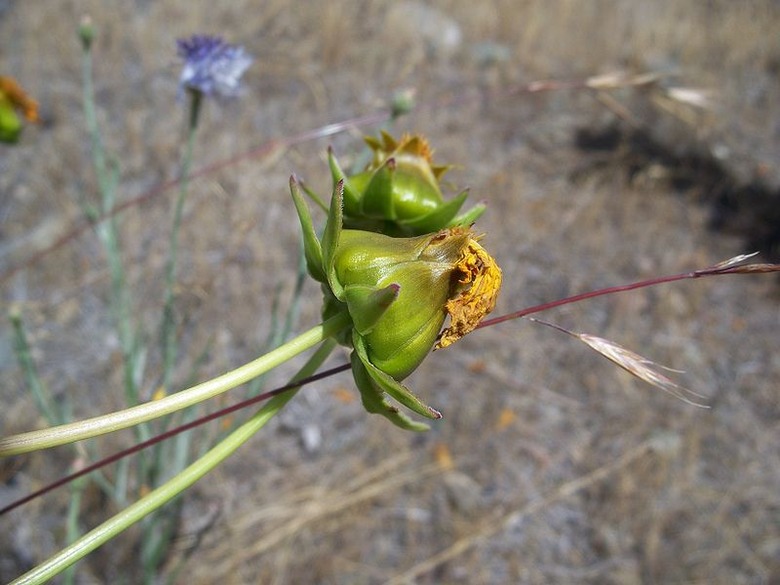How To Collect Dahlia Seeds From Plants
Things Needed
- Garden shears
- Labels, if desired
- Cleared indoor space to dry pods
- Seed flats or string and newspaper
- Shallow cardboard container
- Electric fan
- Bottles, bags or packets
Tip
If you want to re-propagate the same dahlias you are using for seed, dig up the tubers before the first killing frost of the fall and store in a dark, cool place such as a basement. These can be re-planted in the spring in warmer climates, from zones six and above. In case you are having trouble identifying dahlia seeds, they look like long, flat brown sticks with prongs. Some varieties have gray or black seeds as well. See the Resources section for some photos of ripe seeds and seed pods.
Warning
Letting your dahlias go to seed is not going to look pretty. In fact, it looks as though the dahlias have died. Don't dead-head them, though, this is exactly what you want to collect. Remember that the flowers you grow from seed at home are not going to look like the original dahlias. They likely have been cross-pollinated and will tend to be smaller and more open than the parents.
Collecting seeds from these dense, many-petaled blooms takes a little patience and timing. If you want to have seed from your dahlias to start a new bed in the spring, you must help them go through their natural seeding process. If you have a reserved indoor spot or greenhouse, this is the best place to keep cut dahlia pods to dry.
Collecting Dahlia Seeds
Step 1
In the fall, allow dahlias to fully mature and form seed pods—another name for dried flower heads. Larger blooms may need some help with this; loosen up the petals by removing some of the back ones to allow more air circulation. As they form pods, they will lose their petals, turn into a cone shape and begin to darken.
Step 2
Dahlia heads will close throughout the fall until you cut or dig up your dahlias. As they do, cut the heads off, leaving some stem attached to them for easy handling. You can identify when they are ready to cut because the cones will be either straw-colored or completely brown.
- Collecting seeds from these dense, many-petaled blooms takes a little patience and timing.
- In the fall, allow dahlias to fully mature and form seed pods—another name for dried flower heads.
Step 3
Allow the heads to dry for four to six weeks indoors. They can be laid flat in seed flats or hung on lines to dry, but if you hang them, put down newspaper or paper towel below them to catch any that fall as they dry. If you have several varieties, you may want to label them in bunches.
Step 4
Cleaning and separating the seed can be done in very early spring–February in warm climates and March in colder climates. Shucking the heads is best done outdoors or in an easy-to-clean location. Crush the heads gently, discarding the stems and bases.
Step 5
Set up a fan to blow away the fluff and debris from the heavier seeds. Take a handful at a time of the crushed heads and shake them in an open, shallow cardboard box in front of the fan. The rest will blow away, leaving the seeds.
- Allow the heads to dry for four to six weeks indoors.
- They can be laid flat in seed flats or hung on lines to dry, but if you hang them, put down newspaper or paper towel below them to catch any that fall as they dry.
Step 6
Sort through the seeds and clean off any remaining debris. Not all will be viable; those that are will be stiff and slightly heavier than the dead ones. You can store seeds in bottles, packets or plastic bags until you are ready to plant them.
